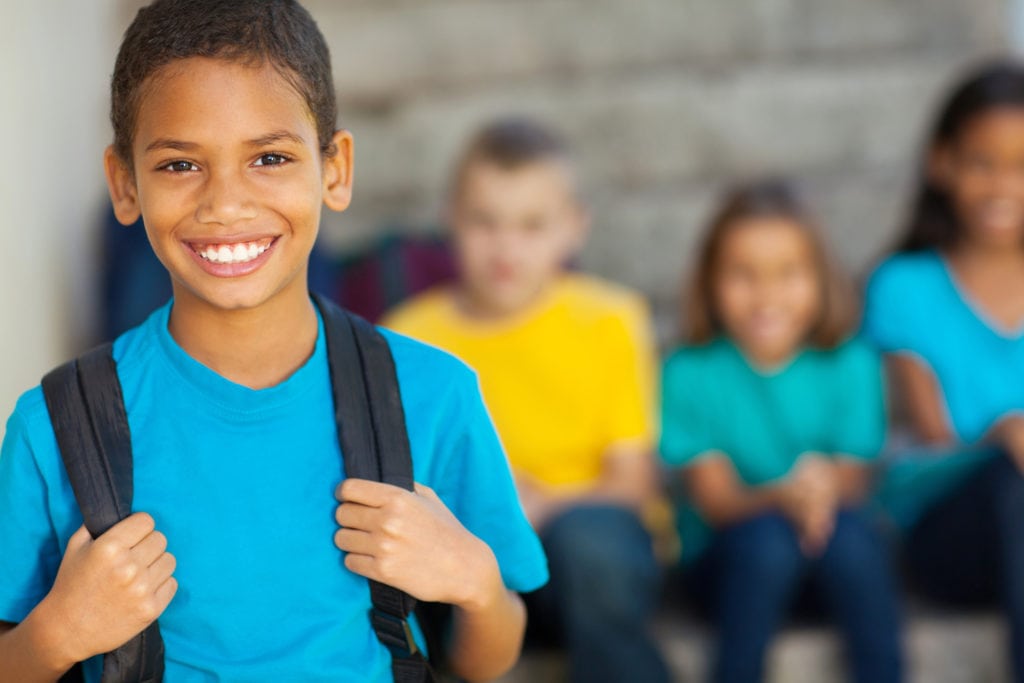
With an abundance of sources for news, not all of which are reliable or trustworthy, many people today may feel a disconnect with the media and the people who report it. And while adults may cite reasons such as media bias, children and young adults simply don’t understand the media – according to a 2016 Stanford University study, 82 percent of middle-schoolers cannot distinguish between an ad labeled “sponsored content” and a real news story on a website. Providing the right tools for young news consumers will help them learn how to spot fake news; how to tell the difference between ads, blogs and news reports; and how to draw their own informed conclusions.
We’ve rounded up several age-appropriate books to help kids at home or in the classroom learn how to navigate the news, just in time for back-to-school.
This book is a good starting point for young news consumers. James defines the primary concepts of media using simple, informative text for emerging readers who are yet to learn the important differences between the kinds of information and stories available to them through the media.
Key quote: “You need to think carefully about news reports you read or hear. Sometimes stories that appear to be news reports are really ads. Other times news reports won’t include all the facts or both sides of a story.” [p.18]
Age range: 6 – 8 years old
What your kids will get out of it: By learning basic concepts of the media and the difference between fact and fiction, as well as the difference between blogs, news reports, advertisements and more, young children will have the tools to be knowledgeable media consumers and become more engaged with media in general.
‘Viral News on Social Media (Young Citizen’s Guide to News Literacy)’ by Paul Lane
Social media is a nonstop content generator that moves as fast as we can scroll through our feeds. We now experience a 24-hour news cycle that can be as beneficial to readers as it is harmful. At a time when clicks and shares are frequently valued over accuracy, readers face an additional challenge – and responsibility – of identifying false sources.
Key quote: “Many times, a picture or a headline that misleads about the actual story is all it takes for a story to be shared, regardless of whether the user reads the article. This helps news spread like an actual virus would spread between people (…)” [p.10]
Age range: 9 – 12 years old
What your kids will get out of it: Students will learn what fake news is, how to identify and respond to it, as well as how to identify reputable sources. Kids will also learn about the power of social media and how viral content spreads, regardless of whether it’s true.
‘Understanding the News (Cracking the Media Literacy Code)’ by Pamela Dell
Children usually perceive news as foreign and unrelated to them; some choose to ignore news simply because they were never given the tools to understand it. Dell’s book highlights the importance of being media literate and gives readers access to the essential skills they need to really engage with the news.
Key quote: “Telling the difference between fake news and reals news takes the skill of an investigator. You must follow the clues that lead to the truth.” [p.28]
Age range: 8 – 10 years old
What your kids will get out of it: Children will learn the importance of media literacy, as well as the many ways news is presented and how to know if they’re using a reputable source. They will also learn how to identify fact from fiction and quality news websites from those that might be biased or fake.
‘Choosing News: What Gets Reported and Why (Exploring Media Literacy)’ by Barb Palser
News is virtually everywhere – practically everything e do is informed by the events that make up “the news.” But how do news producers decide what events should be part of the news we’re presented, whether online, on television, or in print and digital newspaper media? Is news just limited to major national stories about plane crashes and kidnapped babies, or are road closures and malfunctioning traffic lights in local communities news, too? Palser offers a simple and informative guide that answers these questions and helps kids identify real, high-quality news.
Key quote: “Call it the Awareness Instinct. We need news to live our lives, to protect ourselves, bond with each other and identify friends and enemies.” – Bill Kovach and Tom Rosenstiel [p.4]
Age range: 10 –13 years old
What your kids will get out of it: Preteens and teens will learn how to identify what is a potential news story, and on which news platform(s) they would find it. They will learn about journalism standards, types of bias, and how blogs and aggregators work compared to traditional news outlets.
